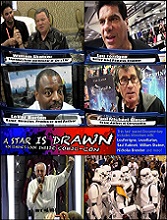In my family we are secular Jews to the extreme. While we wanted our children to identify as ethnic Jews, my wife and I consider ourselves “evangelical atheists,” which means we recruit to our non-belief.
When our children were young we celebrated the historical holidays of Hanukah and Passover as celebrations of struggles against oppression and the desire for freedom. On Hanukah (Struggle) we lighted candles with the wish for global peace. At our Passover (Freedom) Seder we sang Civil Rights songs. By the way, we also had a Christmas tree and celebrated that holiday along with our non-Jewish neighbors in East New York, Brooklyn.
Rosh Hashanah and Yom Kippur have always been problems for us because their meaning is overwhelmingly religious. These holy days are about the supposed origin of the universe a brief 5,771 years ago, recognizing a mythical connection between the Jewish people and their God, and asking a somewhat unforgiving supreme being to relent and wash away a year’s worth of sinning. Nothing historical really happened on these days in the past for us to commemorate as secular Jews (except maybe the start of one of the Arab-Israeli Wars).
Usually we turned Rosh Hashanah into our harvest festivity, with new fall fruits such as apples and my favorite, concord grapes. I also baked round challah bread (the Jewish brioche), shaped that way to recognize the cycle of life and we dipped pieces into honey in hopes for a sweet year.
This year my wife wanted to add more content for our almost six-year-old twin grandchildren and their friends who were coming to dinner. Because of the latest round of Arab-Israeli peace talks, the continuing wars in Iraq and Afghanistan, and because of the controversy in New York City over the proposed Islamic culture center in lower Manhattan, we decided to focus on the importance of peace and brotherhood.
My wife Judith is a retired day care director and early childhood and elementary school professor, so we centered the dinner activities around children’s books. She selected “The Peace Book” by Todd Parr, “Peace Begins with You” by Katherine Scholes, “Peace Crane” by Sheila Hamanaka, ” and “Can You Say Peace?” by Karen Katz.
“The Peace Book” (Little, Brown, 2004) is for younger children. Each page defines peace with a simple phrase such as “peace is making new friends” and a picture. “Peace Begins With You” (Little, Brown, 1989) teaches slightly older children how to be peacemakers based on concern for other people.
In “Peace Crane” (Morrow Junior Books, 1995), a young African American girl appeals to the Peace Crane to help stop the violence in her crime-ridden neighborhood. She imagines “a world without borders, a world without guns, a world that loves its children.” A particularly compelling feature of this book is the way the author depicts a common bond between an African American child needing hope and a Japanese child who died as a result of the atomic bomb dropped on Hiroshima. Their differences of race, generation, class, and culture are supplanted by a common desire for peace.
In “Can You Say Peace? (Holt, 2006), pictures show children in traditional dress and scenes from their homelands. Every child recites “peace” in their native language. In the Hindi language of India children say “shanti.” In the Buli language of Ghana children say “goom-jigi.” In Japan, children who oppose war say “heiwa.” Aboriginal children in Australia say “kurtuku.” Children who speak Spanish say “paz” and children who speak French say “paix.” Iranian children say “sohl,” Russians say “mir,” and Chinese say “he ping.”
In Israel, the Hebrew word for peace is “Shalom.” In the Arab world the word for peace is “Salaam.” In our family, Rosh Hashanah now means peace.
Happy New Year.
Read more: Rosh Hashanah, Islamic Cultural Center, Children's Literature, Religion, Atheists, Arab-Israeli Conflict, New York News


